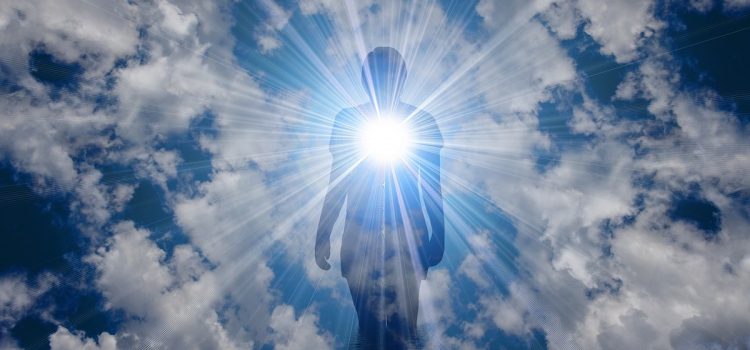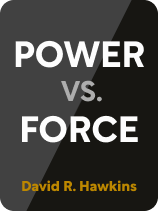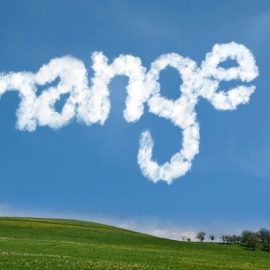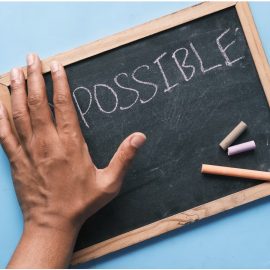

This article is an excerpt from the Shortform book guide to "Power vs. Force" by David R. Hawkins. Shortform has the world's best summaries and analyses of books you should be reading.
Like this article? Sign up for a free trial here.
Why is suffering connected to lower levels of consciousness? Why aren’t there any emotions associated with the highest level of consciousness?
By raising your consciousness level, you can connect to the universal consciousness and glean its insights. Further, the higher you raise your consciousness level, the happier you’ll be, and the more you’ll contribute to the world.
Read on to learn how to raise your consciousness and create positive outcomes for both yourself and others.
How to Raise Your Consciousness
Despite its title, Power vs. Force by David R. Hawkins is really about human consciousness: what it is, how to measure it, how to raise your consciousness, and what you can expect when you move toward and into enlightenment.
Hawkins defines “consciousness” as the ability to experience and understand yourself and your environment. Hawkins says this is possible because your brain is like a biological computer: It takes in data through your senses, then processes that data with electrical and chemical signals, resulting in what you perceive as thoughts and experiences.
Hawkins also says that your mind has access to a universal consciousness shared by all people—the universe’s internet, to extend the computer metaphor. Whatever term you prefer, Hawkins says your connection to the universal consciousness allows you to become effectively omniscient.
The Consciousness Scale
Hawkins developed a scale—what he calls the consciousness map—that measures the strength of your connection to the universal source of truth. According to Hawkins, the numbers indicate the energetic frequency of your consciousness (in other words, your consciousness level), with higher frequencies indicating more awareness and understanding than lower ones.
The lowest rating on the consciousness scale is level 20 to 30, which Hawkins labels as shame. Higher levels of consciousness, particularly those above 300 on Hawkins’s scale, are defined by positive emotions such as compassion, calmness, and happiness. Hawkins’s crucial point is that you need a consciousness level of at least 200 (what we’ll call “bravery”) to interpret the universe’s signals. Bravery is the point at which you’re able to admit when you’re wrong and learn new things; without bravery, you’ll block out the universe’s signals if they contradict what you already believe.
| Having a Growth or Fixed Mindset Hawkins’s description of bravery closely resembles what psychologist Carol Dweck (Mindset) calls a growth mindset: the belief that people can improve their intelligence, skills, and abilities. Crucially, the belief that people can improve makes you willing to work to improve yourself and help others to improve themselves—for instance, someone with a growth mindset would favor rehabilitation for criminals, rather than punishment. The opposite of a growth mindset is a fixed mindset: the belief that everyone has natural, unchangeable abilities and that some people are simply born more intelligent or more talented. If you have a fixed mindset, your focus isn’t on improving yourself, but rather on proving yourself—in other words, demonstrating that you’re more naturally gifted than those around you. You might do this by trying to beat people in competitions, bullying them, or flaunting your success (usually meaning material wealth or impressive job titles). As you’ll soon see, Hawkins describes low levels of consciousness as aggressive, competitive, and destructive, just as Dweck describes some people with fixed mindsets. You could think of 200 (bravery) as the point on the consciousness scale where you shift from a fixed mindset to a growth mindset. |
Move From Force Toward Power
The lower end of the consciousness scale (below 200) represents what Hawkins calls force: aggressive, harmful, and egotistical states of consciousness. These states are undesirable and hurtful. When you rely on force, you try to get what you want by bullying or manipulating others. A level of 200 and above on the consciousness scale is associated with what Hawkins calls power: cooperative, loving, and understanding states of consciousness.
Hawkins says that you reach this level of consciousness when your actions, goals, and morals are all aligned with one another. In other words, everything you do gets you closer to one of your goals; and those goals are based on your values, meaning that reaching them will make you happier. For example, if you value health, one of your goals might be to lose 10 pounds, so you take actions such as exercising regularly and eating a balanced diet.
When you’re in an energetic state of over 200 on the consciousness scale, you work together with others to achieve the best possible outcomes for both yourself and everyone else.
| Boost Your Power With Congruence Life coach Tony Robbins offers similar advice to Hawkins in his book Unlimited Power, and he provides several strategies for achieving your potential (or in other words, reaching a powerful state). Robbins doesn’t believe that you can connect to some greater universal consciousness, but rather that you already have incredible potential inside your mind. Like Hawkins, Robbins says that to bring out your full potential, you must make sure your beliefs, values, and actions are all working together; he calls this state congruence. To reach congruence, first, examine what you believe and what you value, and make sure you’re not holding conflicting thoughts in your mind. For example, if you value physical health but also value the joy you get from drinking alcohol, your values aren’t congruent with each other—you’ll have to decide which one is more important to you. You must also believe that you’re smart enough to make the right decision and disciplined enough to stick to it. Second, take bold and confident action to uphold your now-aligned beliefs and values. To continue the previous example, if you determine that your health is more important to you than alcohol, take action by drastically reducing your drinking and starting to exercise more. Because these actions are congruent with your new values and beliefs, you’ll feel powerful and motivated, so you’ll achieve your new, physically fit lifestyle. |
Enlightenment: The Highest Form of Consciousness
The power scale starts at bravery, the transitional state between force and power. However, according to Hawkins, bravery has a consciousness level of only 200—the highest state of consciousness is enlightenment, which begins at a consciousness level of 700 and ends at 1,000 (the highest possible rating).
When you reach enlightenment, you become part of the universal consciousness and no longer think of yourself as an individual. Thus, there’s no definable emotion or action associated with this level; you simply exist in a state of perfect understanding and serenity.
| The Path to Enlightenment The way Hawkins describes enlightenment is almost identical to the way it’s described in Hinduism: unity with God, which grants you a perfect understanding of the universe and absolute peace. Paramahansa Yogananda explains this Hindu view of enlightenment in his memoir, Autobiography of a Yogi. In Hinduism, the best way to reach enlightenment is by following the Eightfold Path of Yoga: eight practices that help you to understand yourself and understand God. Therefore, Hinduism’s concept of enlightenment arguably takes more effort to achieve than Hawkins’s method of just developing your energy and reducing your reliance on coercion. In fact, what Hawkins describes is roughly comparable to just the first two parts of the Eightfold Path—Yama and Niyama—which deal with how you should discipline yourself and treat others. The remaining six parts of yoga include physical exercises, breathing exercises, and meditation. Hinduism teaches that you must practice all of these things for many years to gain total understanding and control over yourself; only then can you connect your mind to God and reach enlightenment. |
Throughout Power vs. Force, Hawkins emphasizes that improving your consciousness will drive you to keep improving. He’s arguably describing a virtuous cycle: a repetitive process where each step feeds constantly into the next, leading to better and better outcomes. (You could also call this a positive feedback loop.)
The virtuous cycle that Hawkins describes has four steps: develop cooperative energy, reduce your reliance on aggressive coercion, elevate your level of consciousness, and increase your receptiveness to truth. Each step leads to the next, with the final step (increase receptiveness to truth) leading back to the first (develop cooperative energy). These four steps together produce two outcomes: become happier and make the world better.

Exercise: Raise Your Consciousness Level
Think about what your consciousness level is and how you might improve it.
- Describe one area of your life where you tend to rely on aggressive coercion, rather than cooperative energy. (For example, maybe you tend to see your job as a competition instead of a collaborative effort with your colleagues.)
- How might you change from using coercion to using energy in that area of your life? (For example, instead of trying to have the best sales or production numbers at your job, perhaps think about how you could improve your entire department’s performance.)
- To boost your consciousness even further, what’s one new way you could help your family, friends, or community? (Remember that one of the hallmarks of energy is that you give more than you take from the world.)

———End of Preview———
Like what you just read? Read the rest of the world's best book summary and analysis of David R. Hawkins's "Power vs. Force" at Shortform.
Here's what you'll find in our full Power vs. Force summary:
- A complete guide to human consciousness
- How to connect with universal consciousness and glean its insights
- How to use applied kinesiology to tell if something is true or false






